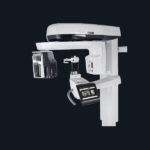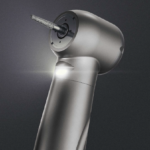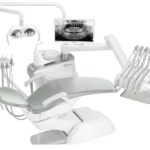
The main purpose of surgical gloves is to act as a protective barrier that helps to prevent the possible transmission of diseases.
It acts as a barrier between healthcare professionals and patients during surgical procedures.
It is important to understand the difference between surgical gloves and medical examination gloves.
Medical examination gloves are a type of gloves that are found in bulk containers in clinical examination rooms.
Moreover, these types of gloves are available in different types of materials, sizes, etc.
Choosing the right surgical gloves is not as simple as buying them at the lowest prices.
You will need to consider the factors like material, properties, tasks to be performed, comfort, fit, and cost.
Keep on reading to learn more about surgical gloves.
Surgical Gloves
Surgical gloves have the following characteristics:
- manufacturers of surgical gloves need to meet a higher level of quality standards
- these are sterile and individually packaged in pairs
- such gloves have a more precise range of sizing than medical examination gloves

On the other hand, medical examination gloves help to prevent contamination between caregivers and patients.
Healthcare professionals use these gloves during procedures that do not require sterile conditions.
For instance, while drawing blood for a blood test.
While some of these gloves can also protect the hands of the wearers from harm that may occur while handling dangerous chemicals or pharmaceuticals.
Learn more about Infection Control and Prevention Guidelines here.
Materials available for Surgical Gloves
Natural rubber latex surgical gloves were first used in 1890.
However, there was an increase in their use dramatically in the late 1980s when latex gloves.
This was to prevent the transmission of blood-borne infections like human immunodeficiency virus, and HIV.
But, the incidence of allergic reactions to latex began to rise rapidly among both patients and health care workers in the 1990s.
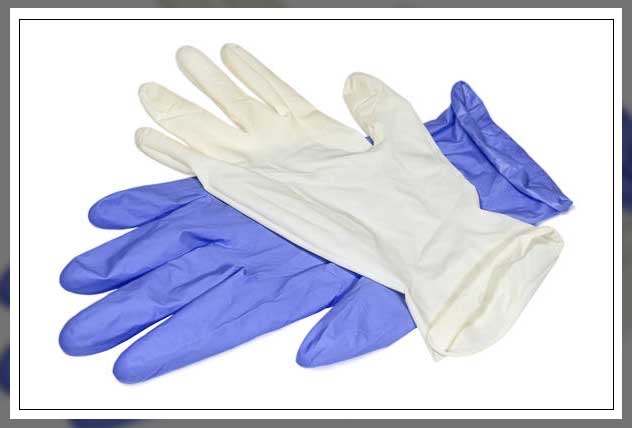
Since then, new synthetic gloves materials have been introduced.
These have properties with regard to strength, comport, and sensitivity.
The majority of gloves, however, are still made from latex.
| Material | Natural/synthetic | Pros | Cons |
|---|---|---|---|
| Latex | Natural |
|
|
| Neoprene | Synthetic |
|
|
| Polyisoprene | Synthetic |
|
|
| Nitrile | Synthetic |
|
|
On the other hand, you can find medical examination gloves of materials like latex or synthetic materials.
These include:
- nitrile
- vinyl, PVC
However, vinyl gloves are less durable and provide weaker chemical protection than other glove materials.
So these are not suitable for healthcare workers in direct contact with bodily excretions or those who handle chemotherapy drugs.
Properties to Consider
Important properties to consider when choosing surgical gloves are thickness, finish, barrier protection, tensile strength, elasticity, and puncture resistance.
Experts measure glove material thickness in mils, and 1 mil=0.001″ gauge.
A number of surgical gloves range from 4 to 8 mils thick, while lower-gauze gloves allow better dexterity, flexibility, and sense of touch.
Moreover, higher-gauze gloves tend to provide better durability, but less flexibility.
It is important to note that surface treatment affects the grip level of the gloves.
The most common surface treatments are surface chlorination and coating/finishing.
You can determine the grip of the gloves by surface tack. Factors like the level of chlorination and the coating a manufacturer uses determine this factor.
On the other hand, a textured glove has a visible texture that you can quickly feel.
The texture may cover the entire finger and palm area, but in some cases, covers only the fingers.
Powdered vs. Powder Free Surgical Gloves
It is important to note that you may find gloves in both powdered and powder-free forms.
Powdered gloves are easier to put on and take off.
However, the major adverse effect of glove power is its contributing role to latex allergies.
In powdered latex gloves, the powder acts as an airborne carrier of latex protein.
There are two types of powder-free gloves:
- chlorinated
- non-chlorinated
However, these types are based on the process used to make the glove powder-free.
On the other hand, those that are chlorinated tend to be particle free and easier to put on.
According to the Food and Drug Administration, FDA, and Center for Device and Radiological Health, surgical gloves should be:
- watertight
- have consistent size
- should fit comfortably.
Furthermore, FDA requirements also define performance properties like the minimum barrier protection and strength these products must show.
It is important to note that all gloves should meet acceptable quality levels, i.e. AQL standards.
These are related to the freedom of products from pinholes and the barrier protection confidence level.
A lower AQL number represents a higher quality product.
Tensile Strenght for Surgical Gloves
Strength tests stimulate stress during actual usage.
Experts measure glove strength by resistance to tearing, puncturing, and breaking as well as by stretchability.
Moreover, testing often covers tensile strength, elongation, elasticity, and puncture resistance.
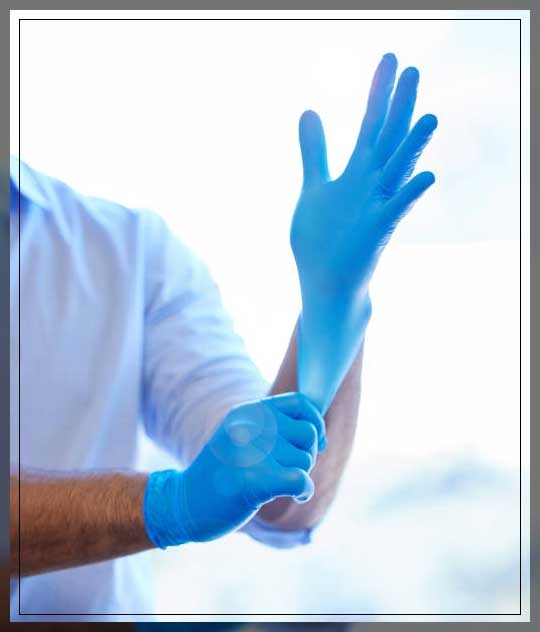
Tensile Strenght is the amount of force in pounds per square inch to stretch gloves until the breaking point.
A higher number shows superior performance.
Elongation is how far a glove can stretch before it breaks and a higher number indicates superior elasticity.
Learn more about Diabetes Devices For Type 1 and Type 2 here.
Latex Allergy and Other Skin Reactions
In case the surgical gloves are of latex, they can cause latex allergy and other skin reactions.
Let’s discuss them as follows:
Irritant Contact Dermatitis
The gloves, chemicals that manufacturer uses to make gloves, glove powder, or sweat can have a direct irritant action on the hands.
This occurs as a result of mechanical disruption of the skin due to the rubbing of gloves.
However, it is not an allergic reaction.
Allergic Contact Dermatitis
It occurs often due to an allergy to rubber accelerators, i.e. certain chemicals manufacturers use to make rubber.
Moreover, this condition can also be due to other glove chemicals like preservatives, colorants, and other additives.
Latex Allergy
Is an allergy that occurs due to natural rubber latex protein.
How to Avoid Skin Irritation?
To avoid skin irritation, follow the steps below:
Non-powdered gloves are less irritating than powdered gloves.
FDA rules ban powdered surgical gloves, powdered patient examination gloves, and absorbable powder for lubricating surgical gloves.
In case wearing occlusive gloves for more than 20 minutes, make sure to use well-fitting cotton cloves beneath them.
This will help to reduce the irritation that occurs due to sweating.
Moreover, it is important to wash your hands thoroughly after removing the gloves.
Also, practice a consistent hand care regimen.
Choosing the Right Gloves
It is important to note that proper fitting of surgical gloves provides and improves performance and reduces hand fatigue.
Latex gloves help to offer good elasticity, strength, and flexibility.
Nitrile gloves are also a comfortable option because of their softness and flexibility, though they tend to be stiffer than latex.
Moreover, nitrile gloves are strong, abrasion-resistant, and cause less irritation.
However, vinyl gloves tend to be soft, and comfortable, but are lose fitting.

Common gloves range from extra small to extra large.
To measure the hand sizes, wrap a tape measure around the palm at its widest point, while this measurement should be in inches.
This is equivalent to the glove size. For instance: 9” measurement = size 9.
However, you can also use the following chart for measurements:
| Men’s Sizes | Women’s Sizes | ||||
|---|---|---|---|---|---|
| Size | Inches | Centimeters | Size | Inches | Centimeters |
| XS | 7 | 18 | XS | 6 | 15 |
| S | 7-1/2 to 8 | 20 | S | 6-1/2 | 17 |
| M | 8-1/2 to 9 | 23 | M | 7 | 18 |
| L | 9-1/2 to 10 | 25 | L | 7-1/2 | 19 |
| XL | 10-1/2 to 11 | 28 | XL | 8 | 20 |
Shelf Life of Surgical Gloves
The shelf life of surgical gloves depends on how you store the products and on the materials the manufacturer uses to make them.
Natural latex gloves have an approximate shelf-life of three years.
While nitrile, vinyl, and other synthetic coats normally have a shelf-life of five years.
In order to help maximize the useful life of any type of glove, make sure to store them in a cool, dark environment.
Moreover, shield them from the effects of ozone and ultraviolet light.
You should be aware of factors like dust, sunlight, moisture, and extreme conditions that have effects on gloves that you put in storage.
Make sure to keep them in a dry, well-ventilated area to prevent deterioration.
Furthermore, you should carry out a thorough inspection of the gloves before using them.
It is important to note that taking out the gloves from their packaging that have tones may be contaminated.
If damaged or ineffective gloves are worn, they can put you at direct risk of contamination.
Thus, you should immediately replace them.
Final Thoughts
Surgical gloves are an important part of your healthcare setting as they protect hands against a full range of biological materials, sharp items, and hazardous chemicals.
Moreover, they help to prevent cross-contamination between healthcare providers and patients. However, make sure to consider factors like material, tensile strength, cost, comfort, fit, etc to make sure you get the right product.


